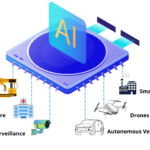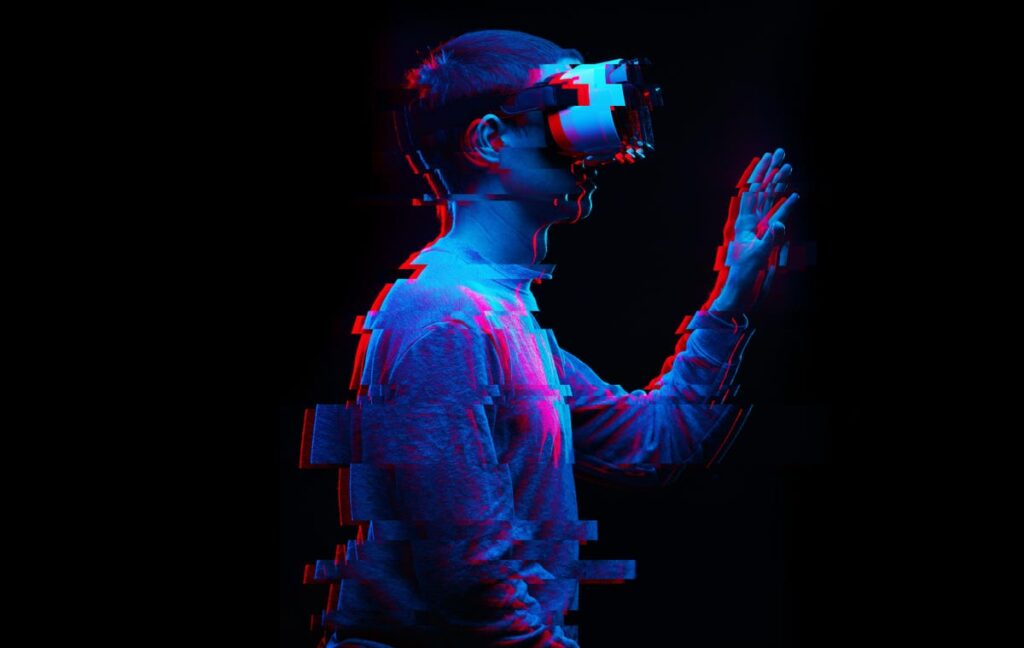Experimenting with realities is something we as humans have always loved to do. For the most part, technology has changed our point of view. The 90’s was the time of the virtual reality boom. More than two decades later, the technology got a reboot. The year 2019 was already a turning point, but the COVID-19 pandemic gave things the final push. And suddenly, the dream of extended reality would come true. But, with the emergence of so many similar technologies, our realities got mixed up.
Mixed Reality (MR)
Mixed Reality is one of the most recent innovations around extended reality where you can manipulate the digital images that are overlaid onto the real world. It means placing new imagery within a real space in such a way that the new imagery can interact, to an extent, with what is real in the physical world. The key characteristic of MR is that the synthetic content and the real-world content can react to each other in real time.
For example, the use of MR glasses can overlay digital images on a patient’s body and help the medical practitioner to perform real-time analysis. And if necessary, patients can also look at their scans in real-time to get better clarity about their physical condition by using these devices.
The use of MR devices can provide surgeons with real-time information on a patient’s physical state while performing the surgery. This is because a mixed reality system provides a comprehensive view of a patient’s physical condition in three dimensions.
This kind of arrangement gives surgeons precise details that help them to make a more informed judgment to save a patient’s life while performing surgeries. This eventually leads to a high rate of success in performing complex surgeries.
Extended Reality (XR)
Extended Reality (XR) is an umbrella term that covers all the immersive technologies that extend the reality you experience by blending the virtual world and the physical world together. Extended Reality (XR) is a newly added term to the dictionary of the technical words. For now, only a few people are aware of XR. Extended Reality refers to all real-and-virtual combined environments and human-machine interactions generated by computer technology and wearables.
Extended reality enables the surgeons to visualize the complexities and issues of the human body and allows them to detect every part of the human body. It is also used in providing training to other medical students and memorizing things properly. The extended reality has provided a helping hand in studying the brain via 3D modes. We can see the front and back of both parts of the brain by using this technology.
4 Ways in which MR 7 XR are changing the face of education:
Extended and Mixed Reality in Education – Staying Ahead of the Innovation Curve
1. Immersive Learning Environments-Streamline the creation process:
Educators use extended reality to create exciting learning environments that allow students to learn by doing. For example, students can visit ancient Rome or experience life as an astronaut on the International Space Station.
By bringing together multiple senses — sight, sound, touch and even smell and taste — teachers can enhance class instruction by using XR technology that simultaneously stimulates numerous learning modalities.
2. Interactive Lessons- Engage one another in real-time
Extended reality makes lessons more interactive as students can take part in immersive activities that make them think critically about what they’re learning. These lessons can also be adapted depending on the needs and abilities of each student.
Each student is present in worlds crafted to promote both motivation and engagement while advancing understanding of Science, Technology, Engineering and Math (STEM) subjects, English Language Learning (ELL) topics and virtual tours of their community.
3. Bridging the Gap between Students and Teachers- Experience it together—anywhere!
The use of virtual reality and 360-degree videos will enable communication and bridge the gap between both parties. As a result, students will ask questions directly to their teachers and get answers instantly. This will help them learn better, faster and in a better place.
Students can experience the use of AR VR in education through their smartphones or tablets, while teachers can guide the learning process from their computers or mobile devices.
4. Collaboration Solutions- Tailor each experience to your subject area
Collaboration is fundamental to a successful education – students can discuss ideas and work together on projects online using VR platforms such as AltspaceVR. This allows them to communicate without being confined to their classrooms or seeing each other face-to-face, giving them more flexibility in their schedules while interacting with others.
In a nutshell, XR combines the experience of all immersive technologies, including VR, AR and MR, and extend the reality you experience by blending the virtual world and the physical world together. XR makes your experience so real that you can hardly tell the real world from the virtual world. MR, on the other hand, combines the best aspects of VR and AR, and as the name suggests, it mixes virtual content or objects with the real word in an interactive, immersive way. In MR, virtual objects appear as natural as objects from the real world, which opens a new realm of experiences.







